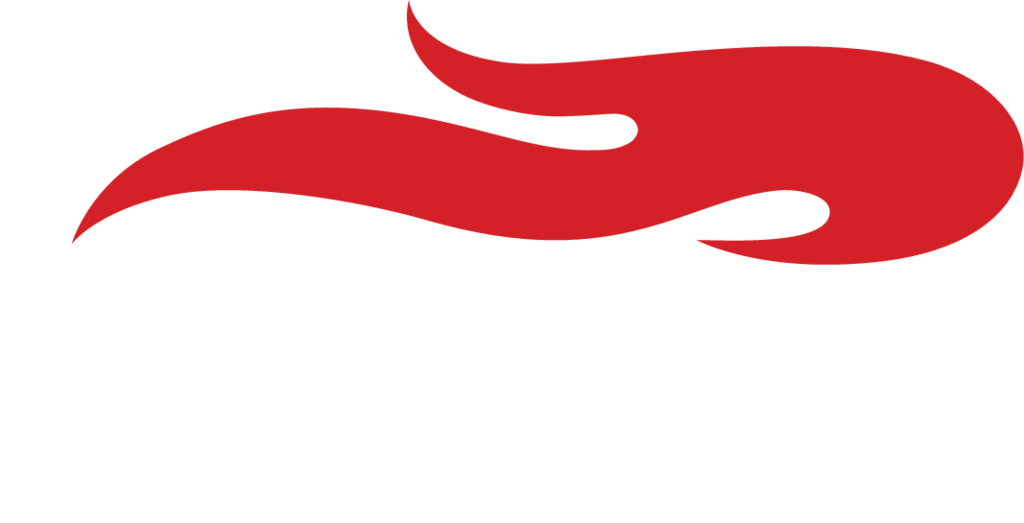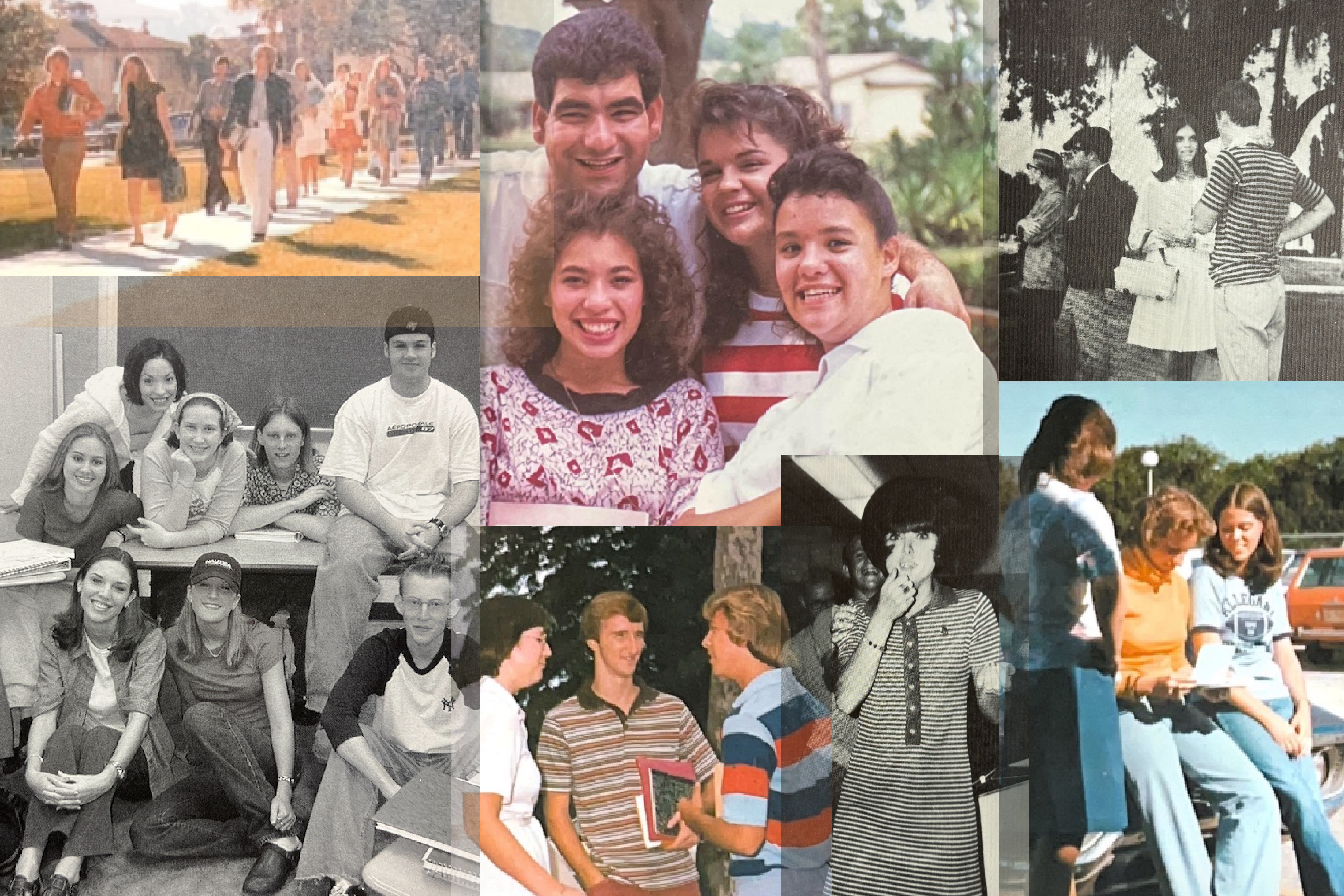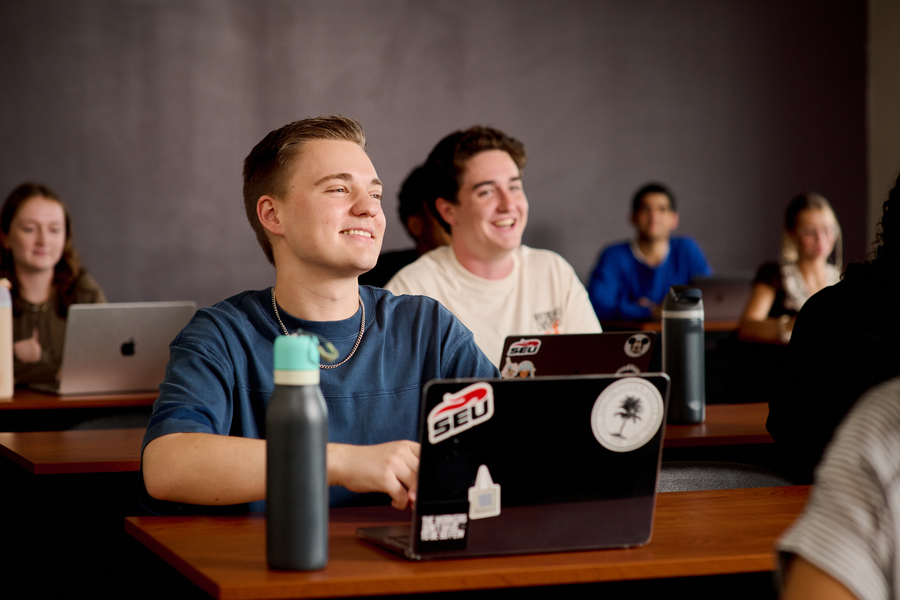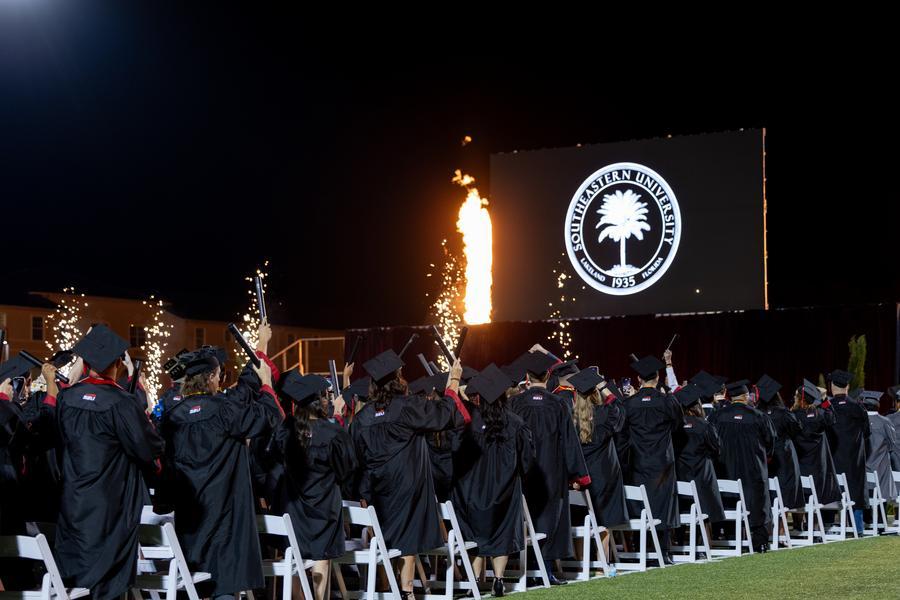As fashion and clothing trends continuously evolve, it’s fascinating to reflect on how SEU’s campus has changed throughout the years. From the 1950s to the present day, SEU has experienced a wide range of fashion trends and styles. From conservative dress in the early years to more modern styles today, fashion at SEU has become a dynamic reflection of societal shifts and cultural influences. Let’s take a closer look at each decade to see just how much things have changed.
1950s
After more practical clothing became prominent during World War II, people in the 1950s chose to wear carefully-curated outfits that emphasized luxury and comfort. In particular, women’s fashion revolved around elegant dresses with matching accessories, including hats, purses, and jewelry.
The style at SEU was no different. Recognizing that navigating the fashion trends of the 1950s could be challenging, the women of SEU worked together to help one another look their best. In an article written in the 1959 edition of SEU’s campus newspaper, The Flame, we see a picture of women at SEU putting together a fashion show, demonstrating how to dress appropriately for any occasion. At this event, women took turns modeling what to wear to church, special occasions, and while traveling.
Men’s fashion in the 1950s became more relaxed and informal than in previous generations. Following the lead of glamorous Hollywood icons, young men’s styles became more colorful and casual than in the past. At SEU, however, men retained a more formal style of clothing, wearing slacks and dress shirts while on campus. In casual settings, men at SEU wore vests, varsity jackets, and cardigans.
1960s
The drastic changes in clothing styles during the 1960s mirrored the rapidly shifting cultural environment at the time. Fashion trends evolved from the timeless looks modeled by Jackie Kennedy and Audrey Hepburn in the early 60s, to the casual, colorful outfits sported by youth at the end of the decade. The fashion choices on SEU’s campus followed suit, although not to the extent of popular culture in general. In the early 60s, students’ outfits were similar to those in previous decades. The women wore knee-length dresses with cardigans, while the men wore slacks and plaid button-down shirts.
By the mid-1960s, however, the styles at SEU had begun to change. Women still wore dresses or cotton blouses, but the colors became brighter, such as yellow-print or rose-colored dresses. For the men, striped shirts became popular on campus and they began to wear a wider variety of colors, sporting pastel-colored shirts with matching socks or light green pin-stripe shirts.
“His-and-hers shirts” were also a fashion trend on SEU’s campus that demonstrated students’ newfound creativity in fashion. These matching shirts for couples quickly grew in popularity and likely made it easier to keep up with student relationships on campus.
1970s
In the 1970s, clothing continued to evolve into the lively styles that characterized the decade. This was the first time that women really began to wear pants, and jeans became acceptable options for both men and women to wear in public. However, these revolutionary changes were more slowly implemented at SEU. On campus, women continued to wear dresses to class and work for the majority of the decade. Over time, women on staff at SEU gradually began wearing pants in the workplace. This groundbreaking fashion decision would soon spread to the student body. In January of 1979, the student government announced that the SEU administration had decided that women could wear pants to class (although jeans were still not considered appropriate).
In the 70s, outside of the classroom, SEU students adopted styles similar to the rest of the country. Both men and women wore iconic bell-bottom jeans with t-shirts. Men often wore colorful pants with striped shirts and open collars. It was still common for women to wear dresses, but they were shorter and had a wider variety of styles than in the past. These diverse clothing options allowed SEU students to display their individual styles and personalities through their clothing.
1980s
The 1980s was a decade characterized by bright colors and daring clothing choices. Despite the bold, bright fashion landscape of the 80s, SEU’s campus maintained a more understated approach, with students favoring straight-leg jeans and comfortable t-shirts over the neon colors and spandex that dominated popular media. A glance through old yearbooks from this era reveals a prevalence of classic preppy styles, including polos, blouses, and button-down shirts, showcasing a timeless and more conservative fashion.
While many college campuses were embracing progressive attitudes, including more relaxed dress codes, SEU fashion trends appeared to remain more traditional. A glimpse into the school’s newspaper, The Flame, from 1989 sheds light on the campus dress code. In a section boldly titled “YES!!! Shorts are in!!!” It was revealed that both male and female students were previously prohibited from wearing shorts. It wasn’t until a proposal was passed by the college’s Board of Directors on Friday, November 10, 1989, that students were granted the freedom to embrace this seemingly-casual wardrobe staple.
1990s–Early 2000s
From the 1990s to the early 2000s, SEU’s campus witnessed a fusion of diverse fashion influences reflective of the broader trends of the era. With the grunge movement leaving its mark on the fashion landscape, students may have been seen sporting the quintessential elements of this style, such as flannel shirts, distressed denim, and combat boots, embracing an effortlessly cool and laid-back aesthetic. The rise of athleisure might have also made its way onto campus, with oversized sweatshirts, track jackets, and sneakers becoming go-to choices for comfort and style. Minimalist fashion, characterized by clean lines and neutral tones, could have found its place among students seeking a more polished and refined look. Additionally, the influence of alternative subcultures, such as goth, punk, and skater styles, became evident in the diverse wardrobes of SEU’s students during this period. The campus likely buzzed with an eclectic mix of vintage finds, band t-shirts, and experimental fashion choices, as students embraced the spirit of individuality that defined the 1990s and early 2000s fashion scene.
Present Day
In recent years, SEU students have struck a balance between past and present fashion trends, embodying the best of both worlds. With the absence of the stricter dress codes of earlier years, our campus is full of diverse clothing styles unique to each individual. Baggy clothes have become a popular choice among students, with oversized t-shirts, loose-fitting jeans, and comfy hoodies creating a fashionably casual aesthetic. Athleisure continues to hold its place, with students seamlessly blending sporty elements into their everyday looks, often opting for stylish sneakers and athleisure-inspired ensembles. Popular brands among students include Converse, New Balance, Doc Martens, Levi’s, and more. Within the last few years, we have also seen a rise in the emergence of a thrift culture. Thrift and consignment stores, which may at one point have held no significance for our generation, have now become more popular and might even be students’ first choice when it comes to shopping for additions to their wardrobe.
From bohemian-inspired attire to streetwear influences, the present-day fashion scene at SEU is a dynamic reflection of the diverse tastes and preferences of our student body, creating a campus where students are free to showcase their unique style expressions.
Written by Emma Gardiner, SEU Student & Mia Golding, Student Writer
Information and photos courtesy of SEU Archive
Learn More
About SEU Archive
The SEU Archive curates the rich historical legacy of Southeastern University by providing context and appreciation for past generations. As we steward the history of the university, the SEU Archive also creates experiential learning opportunities for student engagement with public history and the broader SEU community.
For more information, contact jebritt@seu.edu.




